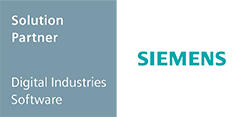Active safety that help to prevent an accident from occurring, or he;lping to minimise the severity of any collision. This includes products such as AEB (Automatic Emergency Braking), ABS & ESP
Secondly, passive safety which is the systems that will activate in the event of a collision in order to help provide support and protection ot the occuapnts. These products include Seatbelts, Airbags, seats and energy absorbing sections built into th e vehicle.
Restraint System Analysis
Having forged strong relationships with some of the industry’s leading vehicle manufacturers and restraint suppliers, our collaborative approach allows us to deliver optimum results when it comes to the specification and analysis of safety restraint systems.
This has also allowed us to specialise in:
- Airbags
- Seat belts and harness restraints
- Belt pretensioner
- Knee Bolsters and interior impact zones
- Seat performance
- Child seat restraints
- Whiplash protection and assessment
Our work within restraint system application focuses on biomechanics – the science that examines the forces acting upon a biological structure and the effects produced by these force, including:
- Side impact
- Frontal Impact
- Roll over
- Rear impact
At its simplest level, a restraint system is designed to manage and control the kinematic energy of an occupant within a vehicle during a deceleration event.
This level of insight allows us to minimise the risk of injury in any given scenario. Through the use of physical testing and numerical modelling, we help our customers to finely tune and deliver the capability required for their vehicles, not only to the minimal legal or consumer test requirement but
well beyond normal legislative thresholds.
If this system is unable to prevent the collision, the restraint system is activated in order to ensure maximum protection with minimal risk of injury to the user. The Algorithms used in these devices are derived from data created within a suite of simulation, which runs using products such as MADYMO.
This performance-focused process helps to define the maximum level of protection that can be delivered to the various sized occupants operating such a vehicle.
The future of Passive Safety (due to active safety)
As active safety is making its way into an increasing number of vehicle segments, with advanced driver assistance systems (ADAS) becoming a necessity for all car manufactururers in their quest for autonomous driving and also achieving the five-star crash test ratings.
The primary aim for adopting active safety systems is to reduce the chances of a crash occurring in the first place, or at least to mitigate the effects of an unavoidable collision. Systems such as autonomous emergency braking (AEB) and lane-keep assist (LKA) contribute toward keeping the occupants out of a collision situation, but what happens if the collision cannot be avoided? This is where passive safety remains a key technology. Seatbelts and airbags aren’t going anywhere, atleast in the short term, but they will be placed and used within the car in new innovative ways.
Despite the advances in safety electronics, there is still considerable potential for passive safety technology. Indeed, passive safety systems will see a technological renaissance as they are developed to work in harmony with the new active safety functionality.
If passengers are no longer required to face the road, can a traditional seatbelt system still protect them in a crash? If a seat can rotate to face the other occupants, where would the airbags have to be located to provide multi-directional impact protection?
Also, all current airbags rely on physical sensors located on the vehicles exterior crash structure to determine when to trigger a deployment, and also what level of power is required based on the deceleration of the vehicle. Hence as we move to level 4 and 5 autonomy, it is possible to use the computational power of the external lidar and radar sensors to determine when a collision cannot be avoided, hence gaining additional time to deploy the airbags earlier and maintain the optimal level of protection possible.
Advanced Simtech is working with our customers to understand how the changing technology within our vehicles would need to be anlaysed to continue to provide the highest level of safety to the occupants within.



Further Information
From assisting in the development of airbag firing strategies, through to improving computer modelling methodologies for manufacturers and restraints suppliers, we are able to help customers to understand the real world application of such devices.
As a result we are often called upon as an expert witness to provide guidance when such a device is alleged to have functioned in an unexpected manner.
+44 (0)1789 264 782
for more information on our services.
FAQ’s
What is Active and Passive Safety?
Active and Passive Vehicle Safety Features have been developed over many years and have been designed to prevent accidents, or collisions, from happening in the first place, but when they do, these systems work to reduce the effects upon the passengers in the vehicles involved, eliminating injuries where possible or if not, reducing these to the minimum level.
What is Active Safety?
Active Safety Technologies continuously work in the background to assist the driver and reduce the likelihood of, or prevent, an accident or collision from occurring. The technology has been developed from the knowledge that more than 95% of all crashes are the result of human error on the part of one or more drivers.
These systems are working to prevent a collision from occurring, or to reduce the impact speed is a collision can not be prevented.
What is a Passive Safety System?
A Passive Safety Feature, is one which becomes “active” once a collision has been detected and is designed to reduce the possibility or extent of injury. It would include technologies like:-
- Restraint Systems; eg. Seat Belts / Pre-Tensioners / Air Bags
- Systems to reduce the injuries to a Pedestrian in an impact; eg. Auto Bonnet Lift
- Vehicle design technologies; eg. Crumple zones and Deformable bumpers
What Software does the development of passive safety systems require?
Digital Twin analysis is a fundamental part of the design, development, and evaluation of these systems. Simcenter Madymo product is the industry leader for the development and analysis of passive safety systems.
We have partnered with the world leading supplier of automotive development software – Siemens Digital Industries Software Industries to support their vehicle safety development software products:-
Partner Companies
As of the start of July 2020, we are now also the UK distributor for Applanix land systems. Providing robust position and orientation solutions for sensors and vehicles. Industry-leading GNSS-aided inertial technology, and Direct Georeferencing of imaging devices sensor fusion and complex systems
VISIT US
If you have any questions about any of our specialist engineering services including Occupant Biomechanics, Vehicle Safety Systems such as restraints and airbags, Advanced Driver Assistance Systems (ADAS), Autonomous Vehicles or 3D Data Capture and Processing, please do not hesitate to get in touch. Our knowledgeable, professional, and experienced team is always on hand to answer any of your questions.
Alscot Estate, Atherstone Hill, Atherstone on StourStratford Upon Avon, CV37 8NF
Tel: +44 (0) 1789 264 782
Email: info@advancedsimtech.com
Advanced Simtech Ltd.
Simtech Ltd
Send Us A Message

Advanced Simtech is an privately owned engineering consultancy specialising in the areas of human biomechanics, vehicle safety and real world accident reconstruction.
Contact Us
Advanced Simtech
Alscot Estate, Atherstone Hill, Atherstone on StourStratford Upon Avon
CV37 8NF
+44 (0) 1789 264 782
info@advancedsimtech.com




